Matador Network's Blog, page 1023
August 30, 2019
How to get paid to be NFL tester

Football, so I hear, is quite entertaining, but if I’m going to sit outside for several hours watching from a safe distance as men careen into each other at high speeds for points, I’m going to need some sustenance. Preferably a tub of cheesy nachos or a juicy burger.
I’m not the only one who feels that football is best accompanied by a first-class meal. Just as much as fans are loyal to their teams, they are loyal to the indulgent, greasy, and thoroughly enjoyable food they get to eat while watching them. If you love football and you love to eat, you’ll probably love a job taste testing the best NFL stadium food in the country.
The sports betting site Pickswise is on the hunt for what it’s calling an “Official NFL Food Tester.” This person will get a $500 stipend, tickets to at least three games, and a generous food allowance (though travel isn’t covered, so your savings account better be full). The job responsibilities will put your desk job to shame.
“We want someone to go to games and eat the best signature dishes throughout the league to give us a verdict on which team does the best dishes,” the job description reads.

Photo: State Farm Stadium/Facebook
After each eating-extravaganza, you’ll be asked to rate each stadium based on the quality of your meals before finally picking which stadium takes the top spot. The job might be difficult: Football stadiums tend to have some creative food on hand, like fried peanut butter and jelly (Buffalo Bills), pizza nachos (Arizona Cardinals), and kimchi hot dogs (Cleveland Browns). Sounds like hard work, but for the good sports fans everywhere, someone has to do it.
There’s no traditional job application. Simply reply to Pickwise’s tweet about the competition with a photo of yourself eating your favorite game day treat — just make sure it’s creative enough to catch the Pickswise’s eye. You can submit your selfie until September 9; a winner will be announced on September 13. If you win, you might have to quit your day job (or at least take a long vacation) to travel the country on your own time, so anyone who isn’t a serious football fanatic need not apply. 

More like this: The 10 most famous hot dog styles in America, ranked
The post Get paid to travel around the country eating NFL stadium food appeared first on Matador Network.

Hurricane Dorian update for Florida

Bust out the bottled water and plywood! Florida’s bracing for its first big storm of the season, and if some predictions are accurate, it could be a real doozy.
Hurricane Dorian, which is sitting pretty as a Category 2 a few hundred miles northwest of Puerto Rico, is inching through the Caribbean on its way to Florida. Along the way, it’s predicted to slow and gain strength from the warm waters near the Bahamas, before making a full charge into the Sunshine State on Monday night as a possible Category 4.
The last storm that strong to hit was Hurricane Andrew in 1992.
Governor Ron DeSantis has already declared a state of emergency in all 67 Florida counties, and 2,000 National Guard troops have been mobilized. The US Navy moved over 50 of its Florida-based planes to states outside the storm’s path. Florida State University even moved its season opener in Jacksonville against Boise State back to Tallahassee. However you look at it, Dorian is something serious.
“It’s going to impact the entirety of Florida, and residents need to be prepared,” Pete Gaynor, acting FEMA administrator said on CNN’s New Day. “So take the time now…to understand what your local risk is.”
If you don’t live in Florida, your “local risk” is probably watching too much storm coverage on TV and wasting your Labor Day weekend. If you DO live in Florida, or have any travel plans that involve Florida, you need to take some precautions.
Because Dorian is an unusual storm both due to its size and some other nearby systems that might affect its path, nobody’s quite sure where the storm is going to make landfall. The “cone of concern” as weather people call it, literally stretches from Jacksonville down to Key West, putting the entire state on high alert. And as the storm progresses, that may change.
If you have any flights that involve Florida, Georgia, or the Caribbean between now and Wednesday, airlines are offering waivers for your flights. Meaning you can change or cancel with no penalty. If travel to the Sunshine State is a must, understand that most airports will probably begin shutting down Sunday in preparation for landfall late-Monday, so if you’re not out by then you may need to drive.
And if evacuations ahead of Hurricane Irma in 2017 are any indication — when motorists told stories of 20-hour drives from Miami to Atlanta — that may be a highly unpleasant option.
So stay tuned through the weekend to see how Dorian unfolds. Jim Cantore is already on the ground in Florida, so you know it’s going to be a crazy weekend. 

More like this: Traveling during hurricane season? Here’s everything you need to know
The post Hurricane Dorian set to hit ‘entire state of Florida’ on Monday night appeared first on Matador Network.

The best diving in Egypt’s Red Sea
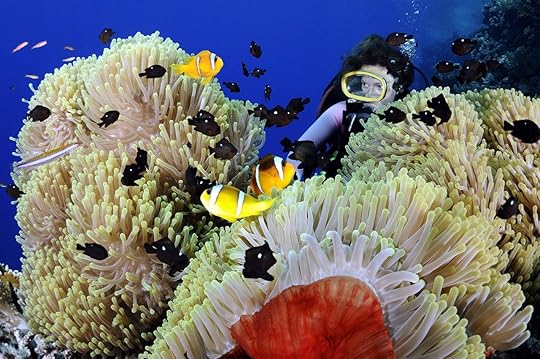
Egypt’s Red Sea has been a popular scuba diving destination for decades, thanks to its stunning biodiversity and world-class diving conditions. The region is best known for colorful, light-filled coral gardens swarming with tropical fish. These fringing reefs are just the gateway to Egypt’s incredible underwater world, though. Dive a little deeper, and you’ll soon discover much more than what first meets the eye.
In recent years, Egypt’s tourism industry has shrunk down to a shadow of its former self. For savvy divers, that translates to uncrowded dive sites and discount prices, so the time to visit is now. Cash in on your opportunity to explore this incredible region before the crowds of tourists make their comeback.
Drift diving in intense ocean current
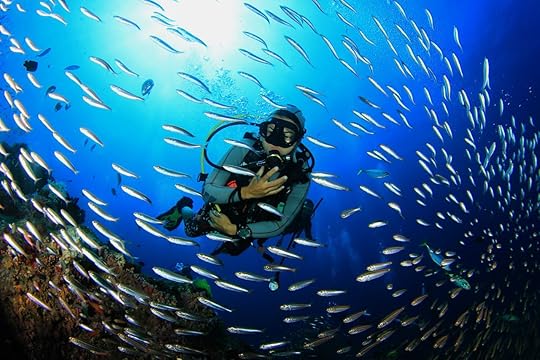
Photo: Rich Carey/Shutterstock
Egypt’s far north is known for its super calm diving conditions. That changes quickly as you move down the coast. Current junkies are spoiled for choice in the south, with plenty of opportunities for fast-paced drift diving.
The El Ikhwa, or Brothers Islands, are so remote that they can only be reached via liveaboard. But, these stunning wall dives are worth the extra time in transit. Out here, you can feel the full power of the Red Sea’s strong currents and dramatic tidal shifts. Most dive groups descend onto the coral-encrusted outcroppings, or “corners,” at these sites, where multiple currents meet. Be sure to keep your eyes on the blue as you drift. The Brothers are known for chance encounters with oceanic whitetips and hammerheads.
Even further afield, southern sites like Daedalus, Elphinstone, and St. John’s boast currents on par with Indonesia and the Maldives. Diving around these islands isn’t for the faint of heart. But, adventurous divers will be deeply rewarded. Big fish like to swim in big currents, and these are some of the region’s best spots for large pelagics like sharks and mantas.
Keep in mind that these high-speed experiences aren’t for everyone. If you’re hoping to take on powerful open ocean currents, you’ll need to feel comfortable with a few advanced techniques like making a negative descent — which means going straight down with no air in your buoyancy control device; a tough option if you have ear-clearing issues. It’s best to practice with a few gentle drifts before taking the plunge in these challenging conditions.
Swimming with wild dolphins
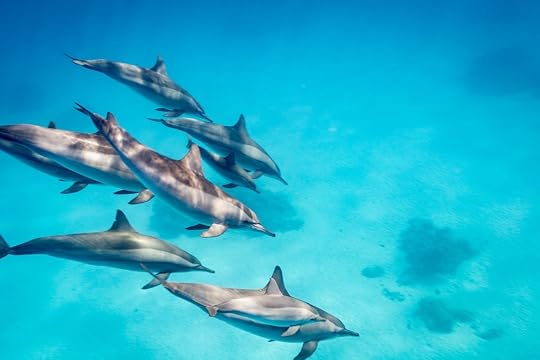
Photo: timsimages.uk/Shutterstock
Just off the coast of Marsa Alam, lucky groups of divers can hit the waves with friendly pods of spinner and bottlenose dolphins. In fact, the Sha’ab Samadai Reef has so many of these famous residents that it’s nicknamed the “dolphin house.” While they are most frequently spotted on the surface, these underwater acrobats do occasionally approach dive groups. So, be sure to keep your eyes out in the blue. Other exciting species sometimes seen here include dugong and eagle rays. Best of all, this dive site is calm and shallow enough for even the newest of newbies.
Farther north, Shaab El Erg features similar diving conditions and just as much dolphin action. And, this site is accessible from Hurghada and El Gouna, so it makes for a great day trip. Many operators offer a two-tank dive and snorkel package to up your chances of an encounter either above or below water. But the best way to experience this site is via a liveaboard. The dolphins are most active at dawn and dusk, and this protected horseshoe bay is a popular overnight mooring for multi-day excursions so it’s easy to go for a snorkel any time you’d like. If you do have the opportunity to stay the night, this shallow reef makes for an exceptional night dive, too.
Remember that you should keep all interactions with wildlife passive. Never chase or grab at dolphins, and choose an operator that upholds safe and sustainable practices. Any business that feeds or otherwise alters the dolphins’ natural behavior should be avoided.
So many shipwrecks

Photo: Levent Konuk/Shutterstock
The SS Thistlegorm is one of the best-known shipwrecks on the planet, and for a good reason. This armed freighter is an underwater playground, packed with cool cargo and plenty of opportunities for penetration. During a dive through her hold, you’ll see trucks, motorcycles, ammunition, and other World War II artifacts like rifles and boots. Above deck, highlights include anti-aircraft guns, a massive propellor and winch, and the opportunity to spot passing pelagics like barracuda and trevally. Lucky groups that visit on a day with good viz can explore the seabed around the wreck. Steam locomotives, ammunition of all sizes, and other wartime relics litter the silty bottom.
Not all of Egypt’s wrecks are the result of war. The Salem Express is a spooky and controversial dive site, due to the tragic loss of life that took place when she went down. This passenger ferry ran aground and sank rapidly, claiming the lives of hundreds of religious pilgrims returning from Jeddah. This dive site is made especially eerie by the large number of personal artifacts that divers encounter. Luggage, televisions, and a children’s tricycle are among the spookiest finds. Some sections of this wreck have been sealed for diver safety, and out of respect for the deceased.
If you can’t make it to either of these showstoppers, don’t worry. Nearly every port in Egypt has diveable shipwrecks nearby. Sharm el-Sheikh’s Yolanda and Million Hope are great for beginners. The Aida and Numidia make fantastic additions to Brothers Islands liveaboard itineraries. And, out of Hurghada, the Kingston, Carnatic, and Giannis D all make for excellent day trips.
Remember, you should never enter a shipwreck without proper certification and training. Doing so can be dangerous. But, with so many impressive wrecks on offer, Egypt is a great place to complete your wreck specialty.
Wall diving into the very deep

Photo: Cinzia Osele/Shutterstock
Dahab is one of Egypt’s best-known areas for diving, and its legendary Blue Hole is the region’s top attraction. This dive site is among the planet’s most famous for technical diving, with depths extending well beyond the recreational dive limits. And, if you want to go deeper, Dahab is an excellent destination for students of tech and trimix diving, which is diving with a mix of three gases for deep descents. If you don’t plan to dive the Blue Hole, don’t worry. This area has plenty of exciting wall dives on offer. Nearby canyons and crevices offer all the same deepwater thrills, without the need for tech certification.
Further south, the diving in Ras Mohammed and the Straits of Tiran continues to impress. These steep walls are heavily encrusted with hard and soft coral that swarm with colorful reef fish. The topography is interesting in this area too, with plenty of caves and outcroppings to explore. These nooks and crannies are frequented by sea turtles, moray eels, and massive grouper fish. Pelagic sightings are frequent here, especially during summer months, so remember to glance out in the blue every few minutes. You never know when a tuna, shark, or trevally might buzz past.
If you’re after dizzying sheer vertical drop-offs, Egypt’s deep south won’t leave you wanting. Areas like the St. John’s Islands and Fury Shoals showcase plunging walls and up-close encounters with large pelagics. These dive sites are remote and completely exposed to the elements, so come prepared for challenging, open ocean conditions and plenty of current.
Sharks, and lots of them

Photo: bernd.neeser/Shutterstock
No matter where you dive in Egypt, you have a pretty good chance of spotting a shark. Which species you encounter depends on which region you choose to visit. Thrill-seekers flock to dive sites like Brothers Islands, Daedalus, and Elphinstone, hoping to come face to face with large pelagic predators. Here, encounters with reef sharks and oceanic whitetips are frequent. And, lucky dive groups might encounter schooling hammerheads cruising past in open water.
In recent months, new restrictions for shark interactions have taken effect around the Brothers Islands. You should always dive with environmentally responsible operators that avoid unsustainable practices like hand feeding.
If you have the time for a longer trip, and don’t mind challenging conditions, head to southern Egypt’s more remote dive sites. These hard-to-reach areas are top destinations for shark diving, and you’ll bump into way fewer dive groups on the reef. The St. Johns Islands and Fury Shoals are known for hammerhead sightings, especially along their plummeting walls. Other species are occasionally spotted here, as well. Watch out for shy threshers and silvertips emerging from the depths, especially during early morning dives.
Some divers prefer day trips and calm conditions. But even that doesn’t mean you won’t see sharks in Egypt. The waters around Ras Mohammed are full of surprises. During summer months, whale sharks make regular appearances here. These gentle giants are usually seen on the surface or feeding in shallow water where they are easy to snorkel alongside. Nearby sites in the Straits of Tiran face the open ocean, so sharks of all shapes and sizes pass through. Reef sharks, hammerheads, and even tiger sharks can turn up along these deep walls. 

More like this: Swimming with dolphins in the Red Sea is a truly magical experience
The post Diving in Egypt’s Red Sea reveals a world of hidden wonders appeared first on Matador Network.

Tribal cultural experiences in PNG

Papua New Guinea is as culturally diverse as it gets. The remote nation that sits in the Pacific Ocean north of Australia is home to over 800 recorded distinct tribal groups that speak at least 750 different languages. Despite the fascinating elements of this civilization, PNG receives very few tourists a year. According to the PNG Tourism Promotion Authority, 2018 saw 94,627 tourists, with only nine percent from North America. For those who want to experience unique customs and traditions, well off the tourist trail, here are seven ways to respectfully immerse in the local culture and gain some understanding of the ways of life in Papua New Guinea.
1. Get to know the Papua New Guinean kina.

Photo: Anton_Ivanov/Shutterstock
Papua New Guinea has had its own banknotes, called kina, and coins, called toea, since its independence in 1975. The traditional money of valuable kina and toea shells inspired the name of the modern national currency. Kina callable pearl shells and toea shells were once used throughout the nation to exchange for goods that a community couldn’t cultivate on its own and for dowries. Tabu shells and pig tusks were also used as traditional monies. The Tolai people of the province of East New Britain still use shells as money, Vice reported earlier this year.
The design of the currency pays tribute to the cultural heritage of PNG. All of the banknotes (K2, K5, K10, K20, K50, and K100) feature the national crest, a bird of paradise sitting on a drum and spear, as well as depictions of traditional everyday items such as shells and tools, ceremonial artifacts like masks and headdresses, and wildlife like boars. The coins (t1, t2, t10, t20, and t50) also display the national crest while the reverse sides feature wildlife such as crocodiles, butterflies, turtles, etc.
To learn more about Papua New Guinea’s beautiful currency and get a glimpse into the culture of the country even before you board your flight, check out the website of the Bank of Papua New Guinea.
2. Be introduced to PNG’s rich culture at the National Museum and Art Gallery.

Photo: PNG National Museum & Art Gallery/Facebook
Flights on Air Niugini, PNG’s national airline, arrive in Port Moresby at the international airport and often don’t connect to regional destinations until the following day. You’ll have just enough time to get acquainted with PNG by heading to the phenomenal National Museum and Art Gallery (NMAG). Since 1977, NMAG has been showcasing artifacts from 19 of the 21 provinces of the country and preserving PNG’s cultural heritage, including the kina shells that were once widely used as currency.
The Tumbuna Gallery is where you’ll find cultural and religious objects from around the country and across many generations. Ancestral masks, totem poles, clothing, headdresses, jewelry, baskets, musical instruments, and more from various tribes are on display with signs that explain their importance, meaning, and use.
The Ian Saem Majnep Gallery is named after a pioneer Papua New Guinean scientist and is dedicated to archaeological finds from the highlands, such as stone axes, pieces of pottery, and various materials dating back as far as 50,000 years.
3. Visit traditional villages.
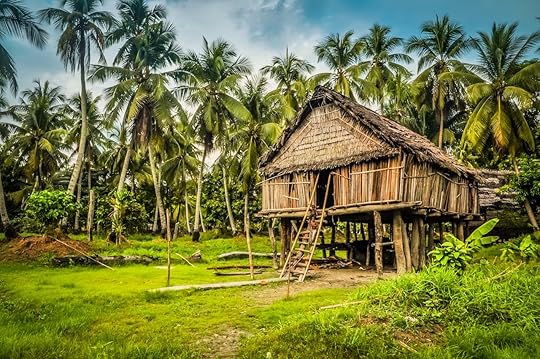
Photo: Michal Knitl/Shutterstock
The people of Papua New Guinea have tapped into ethical tourism by inviting foreigners to visit their villages, share their way of life, and taste their food.
In partnership with Karawari Lodge, villagers along the Karawari River have set up community-based tourism experiences that help them earn an income to support their families and also preserve their culture by showing younger members of their communities that their ways of living are fascinating and of value to the outside world.
To reach Karawari, guests must travel by private charter plane. Once in the area, they board a boat that sails along the river and stops to visit various tribal groups. From the people of the Karawari, visitors learn the time-honored way of how a sago tree is harvested and transformed into a starchy food that provides subsistence for locals, observe ceremonial dances and celebrations, and visit traditional homes.
“Through the demonstrations, villages learn about providing tourism offerings and sustainable tourism. The resorts know how to work with the villages to help their economy as opposed to disrupting it while providing opportunities in terms of employment,” says Erin Mullaney, who represents the Tourism Promotion Authority at Myriad Marketing.
Other areas that welcome visitors include various villages in Mount Hagen where the Melpa people live, including the Asaro Mud Men, who put on captivating demonstrations of how they used to frighten their enemies clad in masks and white paint. Trips to the Hela province takes guests to meet the Huli people, one of the largest cultural groups in the country and one whose customs you won’t experience anywhere else. Trans Niugini Tours organizes tours to these areas of the country.
4. Stay in a guesthouse for a true cultural immersion.

Photo: Tufi Resort Papua New Guinea/Facebook
Many of the villages that are open to outside visitors have created guesthouse programs to continue to funnel tourism dollars into their communities and allow tourists to experience their traditional lifestyles.
Tufi in the Oro Province was the first area to open village guesthouses to visitors. The guesthouse programs are organized by partner hotel Tufi Dive Resort. Each guest house is built with traditional bush materials and is regulated by the Tourism Promotion Agency to meet set standards, including bedrooms with mattresses, pillows, and sheets; a dining area; a shower room; and a pit toilet.
The village stay is the most in-depth cultural experience you can have in PNG. You’ll live like the locals, among the locals, and partake in daily activities such as building traditional homes and canoes from sago palms, fishing, making ropes for hunting, foraging for food, and preparing meals of bush meat such as bats.
Depending on the location of your host family, you’ll be offered diverse experiences such as jungle treks, visits to ancient skull caves, watching for birds of paradise and hornbills, traditional crafts making, witnessing face and body tattooing, etc.
Kofure Village is just a quick canoe ride from the PNG Air dirt airstrip at Tufi and has been hosting visitors for nearly 50 years. Here you’ll be able to see a demonstration of how women from the Maisin tribe make tapa cloth from trees that are traditionally worn as skirts.
5. Attend a sing-sing.

Photo: isaxar/Shutterstock
If you want to witness more than the day-to-day life of the people of Papua New Guinea, go check out a sing-sing. The event, which is a gathering of tribe members in traditional dress performing their ancestral dances and songs, is a deep dive into PNG’s tribal culture.
Sing-sings in Papua New Guinea are held from July to November, and tourists are encouraged to attend. The highly sought-after Mount Hagen (August) and Goroka (September) shows, where hundreds of tribes meet in the Highlands region, tend to sell out a year in advance. The lesser-known ones, like those that take place during the Madang (September) and Kenu & Kundu (November) festivals, are equally fascinating and much more intimate.
“The festivals were initially performed by different tribes who gather to compete and show off their costumes, paintings, sing-sing, and dance to see who had the best. Today, these activities still continue and are seen as a pull factor for cultural tourism. One way of continuing the tradition is by involving young adults and children as early as three years old, whereby the parents dress the kids in traditional attire and allow them to join the sing-sing and dance. The shows were never meant for tourists but for locals. The sing-sings have not changed over the years,” said Pamela Hoepel-Aupae, Marketing Officer at PNG Tourism Promotion Authority.
6. Go birdwatching in search of the most important animal in the country.

Photo: Yusnizam Yusof/Shutterstock
PNG has a bird population of over 760 species, half of which can only be found in this part of the world. So, if you’re into birding, clearly this is the spot to hit.
The bird of paradise, of which there are 40 species in PNG, is the emblem of the country; it is featured on the currency, on the flag, and on the national crest. The feathers of birds of paradise are extensively used by tribes in ceremonial garments and decorations, although tribe members understand the threat under which the birds are because of hunting and loss of habitat, so they mostly recycle the vibrant feathers and pass them down to family members to reuse in order to help preserve species.
There are many birdwatching tours available to visitors, but we recommend the eco-conscious Rondon Ridge in the Western Highlands province. Bird watchers stay in a lodge located in the rainforest, home to 180 species of birds, including many birds of paradise. Early morning on-site birdwatching tours are organized for guests. Visit from June to October for the best birdwatching conditions.
7. Visit the Port Moresby Nature Park for a quick cultural lesson.

Photo: Port Moresby Nature Park
All adventures around PNG include stopovers in Port Moresby between trips from the coast to the highlands. You’ll often have at least half a day in the city, so make the best of it and visit Port Moresby Nature Park. If you didn’t have time to really immerse in indigenous culture during your trip around Papua New Guinea, you can still learn a lot about the heritage at the multi-award winning recreational park.
Cultural elements pertaining to several of the country’s many tribes are weaved throughout the park. There’s a Trobriand Island yam house, a structure found in the center of the villages of the Trobriander people, who live on the four islands in Milne Bay Province; a Gogodala war canoe, a 130-foot war boat traditional of the Western province that is ornately decorated; carved totem poles from the Sepik region; and Kulepteina nests, used for a dance traditional of the New Ireland province during which a performer perches in a nest built atop tall poles. 

More like this: 7 reasons you need to see Papua New Guinea before you die
The post 7 ways to learn about tribal culture in Papua New Guinea appeared first on Matador Network.

US workers lie about bad Wi-Fi

You thought you were slick telling your boss your all-inclusive resort in the Dominican Republic didn’t have solid Wi-Fi.
“It’s the Caribbean,” you said just before a shoulder-shrug emoji you immediately deleted.
You thought your boss believed you. But the fact is much like stealing paper clips and not leaving a dollar in the break-room soda fund, pretty much everyone is lying about not having Wi-Fi on vacation. Okay, not everyone, but nearly half of American workers have lied to their boss about poor internet access while on vacation. This is according to Allianz Global’s 2019 Vacation Confidence Index, which also found that millennials are the most likely to do this at 59 percent, followed by GenX-ers at 49 percent.
Interesting that the generation most likely to give themselves away by posting vacation pics to their Instagram stories are also the most likely to lie about bad Wi-Fi. But that is neither here nor there.
“Most working Americans feel pressured to spend their vacations attached to their work email, when they may just need a few days to unplug,” said Daniel Durazo, director of marketing and communications at Allianz Global Assistance USA via a statement.
Allianz found nearly two-thirds of working Americans feel the need to check up on the office while on vacation, a phenomenon known as “email creep.” Though fewer than five percent of respondents said this was because their bosses expected them too. And only eight percent said it was because they “feel guilty” about not being online. Which begs the question: Why lie about it?
Most feel the need to creep because they don’t want to return to a quadruple-digit inbox, as nearly a third cited making an easier transition back to work as their main reason for checking emails while on vacation.
Bosses were not surveyed, though given you can literally get usable Wi-Fi in Antarctica now, we can assume they’re like parents who choose to believe their kids’ eyes got so red from a campfire. So go ahead and say you found the only hotel in Scottsdale that doesn’t have high-speed WiFi, you’re far from the only one lying about it. And if it helps you maintain a little work-life balance, your employer probably doesn’t mind all that much either. 

More like this: 7 hacks for making the most of a short vacation
The post Nearly half of US workers lie about bad Wi-Fi to avoid working on vacation appeared first on Matador Network.

August 29, 2019
Bottomless Mimosas are a scam

The siren song of the bottomless Mimosa is a strong one. Champagne! Until you can’t drink it anymore! It’s like you’re a Roman god minus the vengefulness. All you’re missing is a nymph feeding you grapes. And in some parts of Miami, you can actually do that too.
But much like $20 of free play at a casino or any trip you get from a timeshare, bottomless Mimosas aren’t done for your benefit. Like the Bernie Madoff of brunch, they bilk you out of your hard-earned dollars with the promise of infinite drunken riches and offer nothing in return but a head-pounding hangover.
The menu makes it look like a fantastic deal: You can order one Mimosa, and it’ll cost you $6. Or you can shell out somewhere between $10-$20, and you get them BOTTOMLESS! There is literally no bottom to your glass! The Mimosas never end!
Seems like a no-brainer, right? But let’s break it down for a second.
The bottles of Champagne used for your bottomless bubbly drinks might cost the restaurant $3 each, and it’s almost never actual Champagne. Instead, it’s a budget bubbly made in the US, or prosecco. (Upscale places, like your Zumas of the world, use expensive shit, but we’ll get to them in a minute.) Unless they’re leaving you the whole bottle to mix on your own, your Mimosa might get an ounce of this bubbly, of which there are 25 in a standard bottle of bubbly. That breaks down to 12 cents per Mimosa, plus the cost of orange juice.
You’d have to be an entire family of Andre the Giants with a taste for cheap André to even make a dent in that kind of profit margin.
To add insult to injury — or maybe just protect themselves from liability — some restaurants go so far as to limit how long you can sit there and enjoy your “unlimited” Mimosas. Which means it’s actually not unlimited but rather limited to how many you can down in 120 minutes.
That limit is further hampered by waiters who are about as eager to refill your Mimosas as they are to tell you which menu items have gluten. Not that you can blame the waiters. If you had to spend your Sunday dealing with drunk people who believe they’re entitled to as much bubbly as their livers allow, you’d wish unthinkable things on them too.
Like a New Year’s Eve open bar where they only staff two bartenders, the system is rigged.
Some restaurants offer bottomless Mimosas for free when you buy a brunch entrée. Which seems like a much better deal until you realize that brunch itself is a scam.

Photo: Iris_Images/Shutterstock
Brunch, for the unaware, is a massive cash cow for restaurants. The food is generally made with cheaper ingredients than dinners, and there’s a high margin on each dish. So even by giving away 12 cents worth of sparkling wine, they’re cashing in the gourmet garbage disposal that is a brunch menu. Even if someone does manage to consume enough Mimosas to make the bottomless price worth it, the Mimosas acted as a loss leader to get the person into the restaurant and purchase the higher margin food. Plus the unlimited Mimosas help you not realize the food you’re getting isn’t the restaurant’s best.
Fine-dining restaurants, like Zuma, offer Ruinart Champagne or, if you pay a little extra, Taittinger or something similar. This seems like a slightly better deal since you’re getting a sparkling wine that’s not available at CVS. But these brunches generally run about $100 if you upgrade the bubbly.
It’s not quite the scam that the cheap stuff is. But if you think you’re getting anywhere near a bargain by dropping the price of a round-trip on Spirit on a hybrid meal, you’re simply a sucker.
I understand small restaurants and mom-and-pops sometimes depend on brunch to break even in the brutal world of restaurants. And you can’t blame them for trying to make the most of booze-fueled logic. But like so many legal scams, it’s on us, the consumers, to figure it out and say no, thank you, I’ll just have a cocktail today (there are so many better aperitivi anyway that include actual liquor). Come Monday, you and your bank account will both realize it was the better decision. 

More like this: How early you can start drinking at brunch in every state
The post Your bottomless Mimosas are a scam, regardless of where you eat appeared first on Matador Network.

Dr Seuss Experience in US and Canada

If you’ve ever fantasized about what life would be like in a Dr. Seuss book, then you only need to dream on a little bit longer. The Dr. Seuss Experience is taking to the road with a multi-city tour, starting on October 26 in Toronto.
The exhibit is designed to be an immersive experience through nine different worlds in the Seuss universe. Visitors will feel like they’re one of the characters as they head through a balloon-filled maze from Oh, the Places You’ll Go!, listen for Whos in a field of clovers from Horton Hears a Who!, and walk under Truffula Trees from The Lorax.

Photo: The Dr. Seuss Experience/Facebook
In addition to living your favorite childhood stories, there’ll be plenty of Instagram opportunities and character meet and greets within the 15,000-square-foot space.
The experience has apparently been a few years in the making, only now coming to fruition. “I wanted to explore the books and bring the characters to life in a new and engaging way,” said Susan Brandt, president of Dr. Seuss Enterprises, the company founded by Audrey Geisel, and the late widow of Theodor Seuss Geisel, otherwise known as Dr. Seuss himself.

Photo: The Dr. Seuss Experience/Facebook
Other than Toronto, the exhibit will stop in several North American cities, such as Boston, Seattle, and Houston. Just like its location, the experiences within the exhibit will change in each city. Some of the rooms will be switched out for other Seuss novels, and there’ll even be changes for the time of the year. Whatever city gets a How the Grinch Stole Christmas-themed experience for the holidays should expect to be the object of much envy.
Tickets are expected to go on sale sometime next month, and prices have yet to be released, but can you really put a price on nostalgia?
Be sure to sign up on the official website to receive updates. 

More like this: Meet Li’l Sebastian at this ‘Parks and Recreation’ pop-up bar
The post An immersive Dr. Seuss exhibit is touring around the US and Canada appeared first on Matador Network.

Trump wants to log Tongass forest
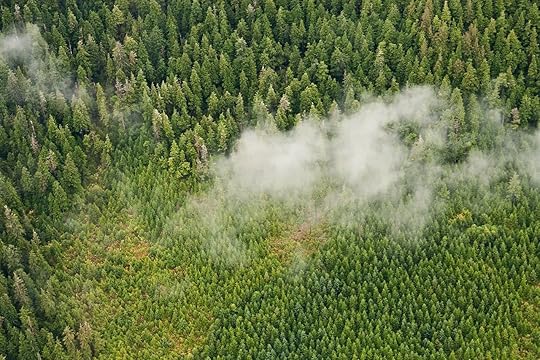
As if we needed any more forest land to worry about, President Trump has directed Agriculture Secretary Sonny Perdue to exempt southeast Alaska’s Tongass National Forest from logging restrictions passed by the Clinton administration. Spanning 16.7 million acres, Tongass is the largest national forest in the United States and the most extensive intact temperate rainforest on the planet. Trump’s plan opens it up to not only logging but also energy and mining operations. If successful, roughly 9.5 million acres of protected land could be impacted.
This isn’t the first time Clinton’s conservation measure has been challenged: President George W. Bush also sought to reverse his predecessor’s “roadless rule” restrictions, which prohibit road construction and timber harvesting in over half of Tongass National Forest. Though he was ultimately unsuccessful, it remains to be seen whether or not Trump, who has expressed interest in becoming more involved with forestry decisions, will triumph.
Where labor is concerned, the timber industry in southeast Alaska represents only one percent of jobs whereas seafood processing and tourism make up eight and 17 percent, respectively. According to the US Forest Service, the salmon industry alone is said to bring in around $986 million per year. Both industries rely on the national forest remaining intact, as do the many species that call Tongass home. The forest’s old-growth spruce, cedar, and hemlock trees are an important habitat for brown and black bears, Sitka black-tailed deer, bald eagles, and other precious species. 

More like this: Brazil refuses to accept $20 million in aid to fight Amazon fires
The post Trump wants to log Alaska’s Tongass National Forest, the largest intact temperate rainforest in the world appeared first on Matador Network.

Snow-aged Japanese soy sauce
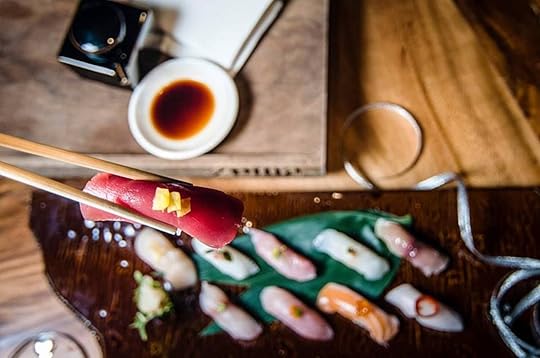
Most Americans, regardless of their fluency in the incredible breadth of Asian cuisine, have tried soy sauce poured from a bottle of red-topped Kikkoman, a staple in the pantry of countless households and restaurants. Few people in the US, however, have experienced rare and high-quality soy sauce, the pinnacle of which is snow-aged. Tasting it will transform your understanding of what a simple soy sauce can accomplish — if you can get your hands on a bottle.
Snow-aged soy sauce is a speciality of the Niigata prefecture in Japan. It’s close to the water, and mountain ranges ripple through the region, making snow fall so common that Niigata is commonly referred to as “snow country.” A method for aging soy sauce to perfection emerged 400 years ago in this wintery climate, in which snow is used as a “natural refrigerator” for the nama shoyu, which is raw (or unpasteurized) soy sauce.

Photo: Zuma New York/Facebook
Zuma — a Japanese restaurant with locations in Boston, New York, and Chicago — is the only restaurant in the United States with snow-aged soy sauce on the menu, specifically a brand called Yukimuro-Yuraka. This is a culinary coup for Zuma, which takes pride in not just the taste of its snow-aged soy sauce (more on that soon) but the way it’s produced, too.
“These days, since the demand for soy sauce is so high, most of the soy sauce breweries are buying soybeans from Canada or China,” explains the head chef at Zuma New York, Oliver Lange, where Yukimuro-Yuraka is served with sushi and sashimi tasting courses.
By contrast, at Hokushoku, the company that produces Yukimuro-Yuraka, almost all of the ingredients for the soy sauce are sourced in Japan. The soybeans and water come from Niigata, the salt from Nagasaki, wheat is shipped in from nearby Gunma. And sticking to local ingredients isn’t the only way it’s better for the environment.
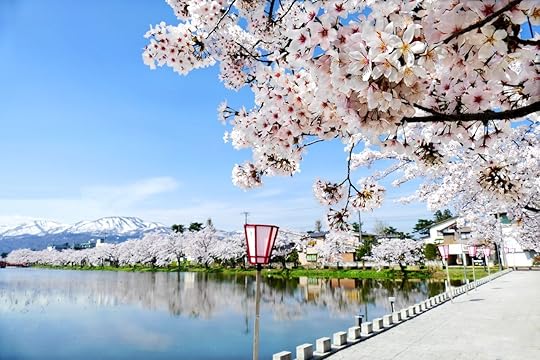
Photo: jirobkk/Shutterstock
Though the advent of electric refrigerators nearly extinguished the practice of snow-aging, some producers in Niigata held on to the practice. Another company that produces snow-aged soy sauce, Echigo-Yukimuro, claims that every ton of snow used amounts to a 30 kilogram reduction in carbon dioxide emissions that would be released from keeping the soy sauce chilled using traditional refrigeration. Echigo-Yukimuro uses as many 700 tons of snow annually to snow age its products, which, in addition to soy sauce, include things like tea, fish, and sake.
“It’s a very eco-friendly method of aging soy sauce,” Lange says. “It’s more sustainable.”
The soybeans themselves have already been fermented by the time the bottles end up in the yukimuro, the snow-encased room where they will be aged for an additional one to four months. The temperature inside the yukimuro stays constant, no outside light is allowed into the room, and the yukimuro’s high humidity ensures the soy sauce doesn’t dry out. The room is free from vibrations, too — totally still.
The state of the room is called seichi, safe from influences outside the doors of the yukimuro. The soy sauce is literally less stressed out and therefore ripeness gently, without its freshness deteriorating over time.
The process might sound arduous, but it’s worthwhile. Most people will only ever know soy sauce as a condiment intended to add a salty kick. Snow-aged soy sauce, on the other hand, is smooth and subtle, intentionally low in sodium and slightly thicker in viscosity. It hardly has a flavor of its own; its sole purpose is to elevate the complexities of other dishes.
“In terms of taste, it’s much more mellow,” Lange says. “The flavor is more balanced. Some soy sauce is very aggressive in saltiness, a little bit too sharp or tangy. But this soy sauce… supports the ingredients, it brings out more flavor.”
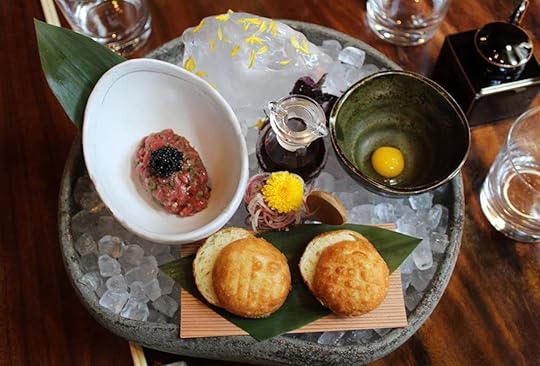
Photo: Zuma New York/Facebook
I recently had the opportunity to try it for myself at Zuma. The soy sauce arrived at our table in a stout, unlabeled glass bottle alongside a stub of wasabi root, which was freshly grated in front of us. I gingerly tapped a thick, rich slice of ruby red tuna belly into the soy sauce — just a touch — and took a bite.
The soy sauce itself isn’t distractingly acidic, nor could the salinity even be described as crisp. Yet to say it’s bland isn’t quite right either. Yukimuro-Yuraka snow-aged soy sauce is simple, fresh, and light — a breeze of salt passing over your palette then dissolving. The already divine flavors of the tuna belly popped; the soy sauce succeeded in underlining, even emphasizing, this delicious fish but never overwhelmed it. The tuna belly itself melted away on my tongue like a knob of sea-washed butter.
“I’ve never tasted anything this fresh,” Zuma’s executive sushi chef, Kwang Kim, said of the yukimuro soy sauce when he stopped by our table to say hello.
At the moment, Zuma is still the only place in the country where you can try Hokushoku’s snow-aged soy sauce (Chef Kim jokes that he hopes it stays that way for the foreseeable future, as it speaks volumes about the quality of his restaurant). There are so few companies producing snow-aged soy sauce that it’s nearly impossible to find outside of Japan. In my own research, I couldn’t even dig up a place to snag a bottle online. If you want to get a taste for yourself, it has to be at Zuma.
The restaurant has become a perhaps unexpected ambassador of this culinary treasure. Lange says he stumbled upon it while on a research trip visiting sake breweries and rice farms in Niigata. It’s easy to see why Lange was so drawn to it. On a plate of much more flashy, attention-grabbing foods, Yukimuro-Yuraka soy sauce acts as a spotlight, making everyone else look good while confining itself to the background.
This shouldn’t necessarily be news, at least not to people familiar with sushi. A high-quality soy sauce will never overpower expensive pieces of fish. Yet the arduous process by which snow-aged soy sauce is produced sets it well apart. The care with which Niigata’s snow-aging experts treat this humble ingredient that most people, I think it’s fair to say, take for granted is a reminder of its honored status in Japense cuisine. To taste it alongside sushi and sashimi is to briefly glimpse how magnificent food can be when the ingredients are treated with respect. 

More like this: Everything you need to know about Japanese barbecue
The post Snow-aged soy sauce takes sushi to a new level, if you can find it appeared first on Matador Network.

The best hiking in Osaka, Japan
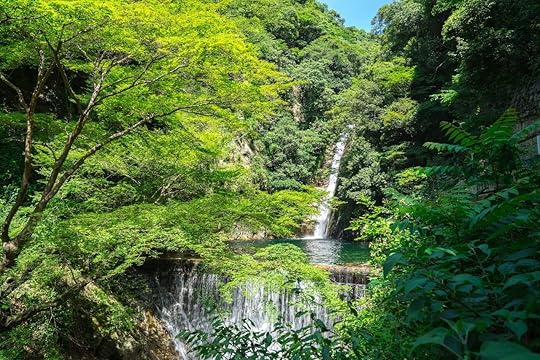
Osaka is Japan’s second city, a neon-lit wonderland known for its mouth-watering food, down-to-earth residents, and vibrant subculture. As a major urban hub, it’s an exciting place to visit — from the resplendent Osaka Castle to the colorful streets of Dotonbori. However, spending a long time in any city can leave you craving some greenery and fresh air. So here are five day hikes that are perfect for escaping the hustle and bustle of Osaka’s concrete jungle and getting out into nature.
1. Mount Maya
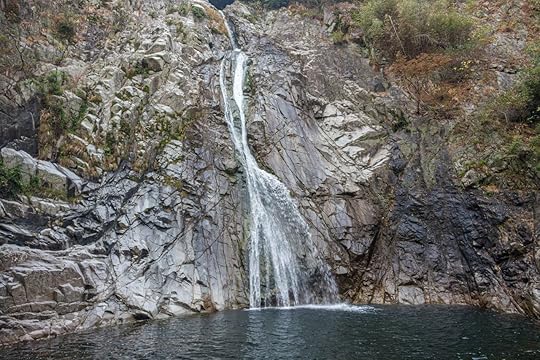
Photo: Toby Howard/Shutterstock
Over in the neighboring city of Kobe stands the rugged Rokko mountain range, of which Maya is one of the principal peaks. The trail up to the 2,292-foot summit first takes you past Nunobiki Falls, a series of four gorgeous cascading waterfalls. From here you continue into the woodland, with the option to take a detour to the Nunobiki Herb Garden before heading to the top.
Thanks to its reputation as having one of the top three night views in Japan, there’s also a cable car and ropeway system to take you all the way to the Kikuseidai Observation Platform. Day or night, the view from here out over Kobe and back to Osaka is breathtaking.
Getting there: The nearest station is Shin-Kobe, on the Tokaido-Sanyo Shinkansen. You can take the bullet train directly from Shin-Osaka, which takes around 12 minutes, or travel by local trains for a longer but cheaper journey. The hike begins just to the north of the station.
2. Mount Ikoma
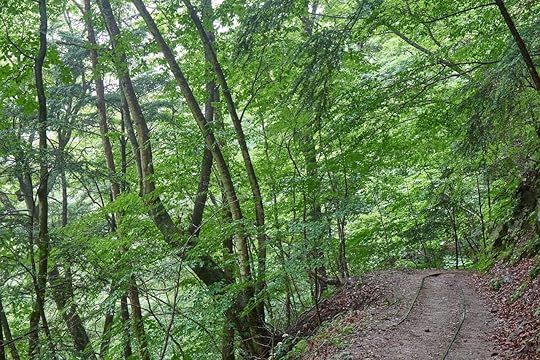
Photo: mokokomo/Shutterstock
This 2,106-foot mountain on the border of Osaka and Nara prefectures provides a hike of wonderful contradictions. Beginning with a long walk up the steps of a traditional shopping street, it first takes you through the tranquil grounds of Hozan-ji temple. This incense-shrouded haven, with its striking lantern-lined entryway and charming red pagoda peeping out from the trees, is well worth looking around before continuing up the trail.
When you finally reach the summit, however, you’ll be in a completely different world. At the top lies the quirky Ikoma Sanjo children’s amusement park, complete with vintage rides and panoramic views. For those who just want to catch the highlights, a cable car also runs up to both the temple and the park.
Getting there: The nearest station is Ikoma, which is on the Kintetsu Nara Line. Direct trains run from Osaka’s Namba Station, and the journey takes about 30 minutes. From here, head up the road next to the cable car station to reach the temple. The hiking trail continues from the back of the temple grounds.
3. Takatori Castle Ruins

Photo: Osaze Cuomo/Shutterstock
This Tomb Raider-style adventure takes you through the peaceful town of Takatori and up into the forests of the mountain behind it. Atop the 1,798-foot summit you’ll find the imposing ruins of Takatori Castle. Once one of the largest mountain-top castles in Japan, it is now an atmospheric labyrinth of crumbling walls, moss-covered ramparts, and stairways leading to nowhere. Perfect for unleashing your inner Lara Croft.
The hike up only takes an hour or two, and the trail doesn’t present too much of a challenge. To extend your trip, take a detour to the nearby Sousen-ji temple or enjoy a picnic on one of the benches at the summit.
Getting there: The nearest station is Tsubosakayama, which is on the Kintetsu Yoshino Line. You can get a direct train from Osaka’s Adenobashi Station, with the journey taking around 45 minutes. After a 20-minute walk through Takatori, you’ll enter the forest where the trail begins.
4. Mount Kongo
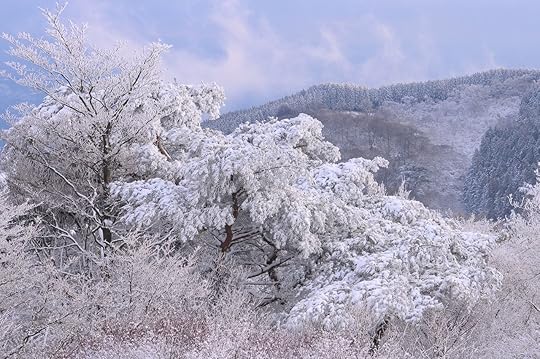
Photo: Paul Laubach/Shutterstock
At 3,690 feet, Kongo is the tallest mountain in Osaka Prefecture. This makes it a popular choice with hikers, and there are numerous trails of varying difficulty levels running up to the summit. And if you don’t fancy scaling the peak on foot, there’s also a cable car that can take you most of the way to the top.
Whichever route you choose, once you reach the summit there are a surprising number of attractions to explore. These include some interesting temples and shrines, a campsite, a cafe, and even a museum. Be aware that if you make the hike in the winter the route will likely be snowy, but it’s a great chance to see the beautiful frost-glazed trees known as juhyo.
Getting there: Take the Nankai Koya Line from Osaka’s Namba Station to Kawachinagano. From here, take a bus to the Kongo Tozan Guchi stop. The whole journey should take just over an hour, depending on how long you have to wait for the bus.
5. Takedao Train Tracks

Photo: Trialist/Shutterstock
If you’re looking for a more unusual hike, Takedao is a great choice. It follows an abandoned riverside railway line through a combination of natural and man-made features in an area that nature has reclaimed as its own.
The most exciting part of this hike is that the trail takes you directly through a series of pitch-black tunnels, plunging you into an inky darkness where every sound is amplified. Back out in the sunlight, you’ll also head across picturesque ravines via suspension bridges, their once-bright red paint now faded and worn. The hike itself is easy, as the railroad you’re walking on is almost perfectly flat, and can be completed in a few hours.
Getting there: The nearest station is Namaze, with JR trains running directly from Osaka Station in about 40 minutes. Head along the main road until you pass under an expressway; then turn right down to the river where the trail begins. The hike ends at Takedao Station, where you can catch a direct train back to Osaka. 

More like this: Four stunning day hikes you need to do in Kyoto
The post 5 fantastic day hikes near Osaka, Japan appeared first on Matador Network.

Matador Network's Blog
- Matador Network's profile
- 6 followers



